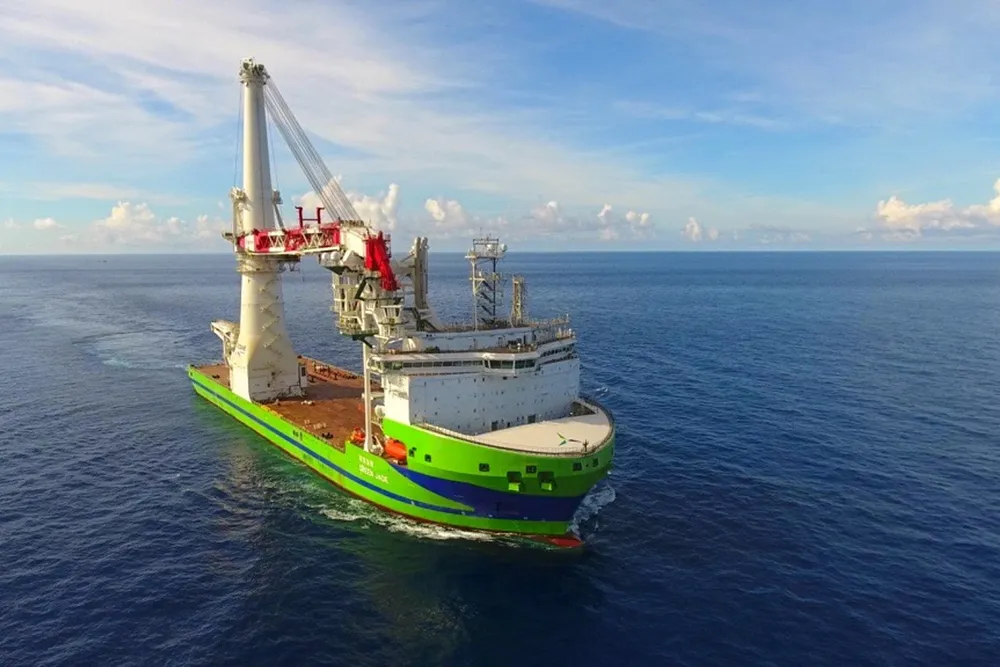Taiwan stuck in offshore wind slow lane with CIP's Fengmiao sole Round 3 project to progress so far
Island’s 15GW multiphase third solicitation mired in high costs and offtake woes as local content rules slow development and projects bail

Taiwan’s languishing third round offshore wind procurement got a much-needed boost with an installation contract issued by Copenhagen Infrastructure Partners (CIP)’s 500MW Fengmiao 1 array.
The contract went to CDWE, Deme’s joint venture (JV) with Taiwanese shipbuilder CSBC, for transport and installation of jacket foundations, signaling the project will proceed towards its 2027 commissioning target.
It is so far the lone wind farm to progress in the island's multiphase Round 3 seeking to add 15GW.
Bolstered by government feed in tariffs (FiTs) and lenient localisation policies in its first two procurements, Taiwan already has some 2.3GW of capacity installed in the Taiwan Strait separating it from China, with another 3GW in late-stage development.
The procurement's first phase, Round 3.1, awarded 2.35GW of project capacity to developers including CIP, a joint venture (JV) of Corio/Total, Skyborn, SRE, and a partnership between EDFR and local firm Taiya.
So far, CIP’s Fengmiao 1 is the only project to advance.
Offtake obstacles
The decline of FiTs has forced developers to seek corporate PPAs with the nation’s many high-tech manufacturers, including TSMC, the world’s largest merchant chipmaker with some 60% of global market share.
Strict local content requirements and an underdeveloped supply chain among other factors have raised sector costs to among the highest in the world, with developers saying they need some TWD6/kWh – equivalent to $190/MWh – to go forward, but few customers are willing to pay such high prices.
“Currently, a significant challenge is the absence of off-takers willing to purchase costly offshore wind power,” said Chenyuan Diao, managing consultant, power and renewables research at Wood Mackenzie.
Earlier projects awarded under more lenient localisation polices have found customers in the corporate market.
Caps on project size at 500-600MW in most cases, lack of available financing in the local currency, and global inflation add to the challenges.
“Addressing these questions demands innovative initiatives and robust government backing – e.g. ensuring sufficient demand for green power, improving CPPAs and project financing environments, and reducing the high costs associated with local offshore wind,” she added.
Round 3.2
Raoul Kubitschek, Taiwan renewable energy expert for consultancy Niras, wrote on LinkedIn: “To warrant a successful build out for Round 3.2, Round 3.1 will need to fix itself first.
“The challenges: localisation, monetisation, supply chain bottlenecks and access to financing have not magically changed,” he added.
Bidders include CIP, Corio, EnerVest, Orsted, Shinfox, and Synera Renewable Energy.
Despite the sector's struggles, BloombergNEF remains bullish on the sector, and has only lowered its 2030 forecast by 2% to 12.5GW, anticipating “these near-term headwinds are temporary”.
The research consultancy sees the island installing 20.5GW by 2035 and 26.1GW by 2040.
Its forecasts hinge on “Taiwan's manufacturing capacity expansion, cost reductions by local manufacturers, and corporates' willingness to pay a price premium for offshore wind,” the consultancy said in its first half 2024 market report.
(Copyright)